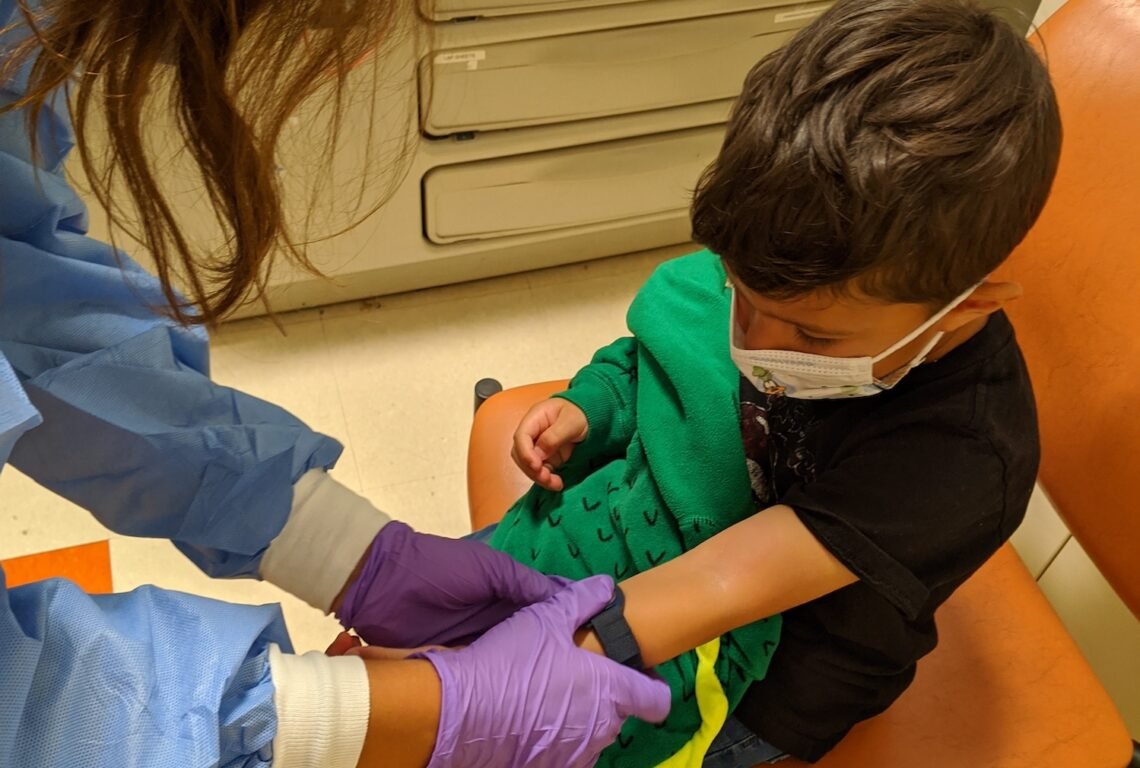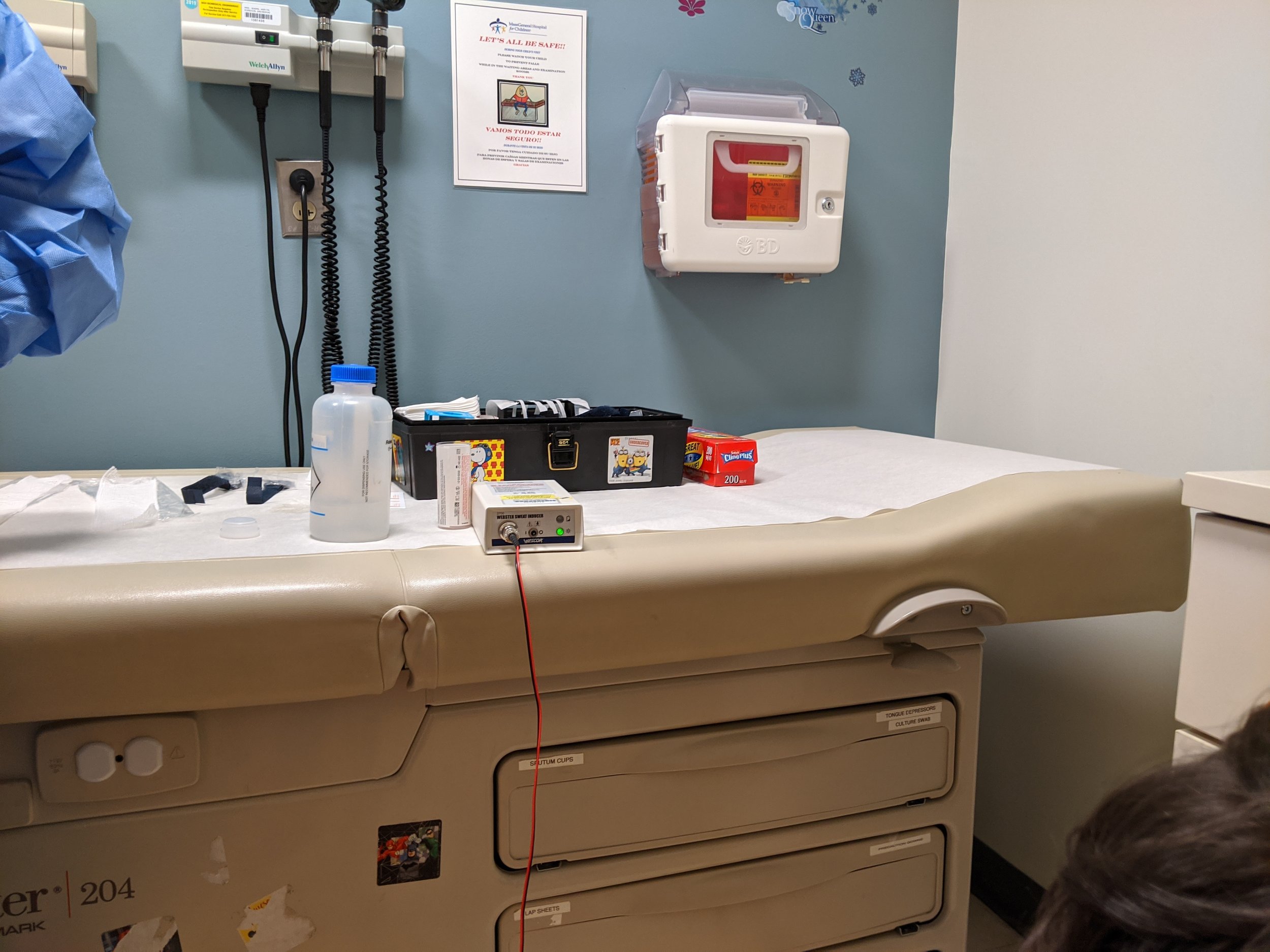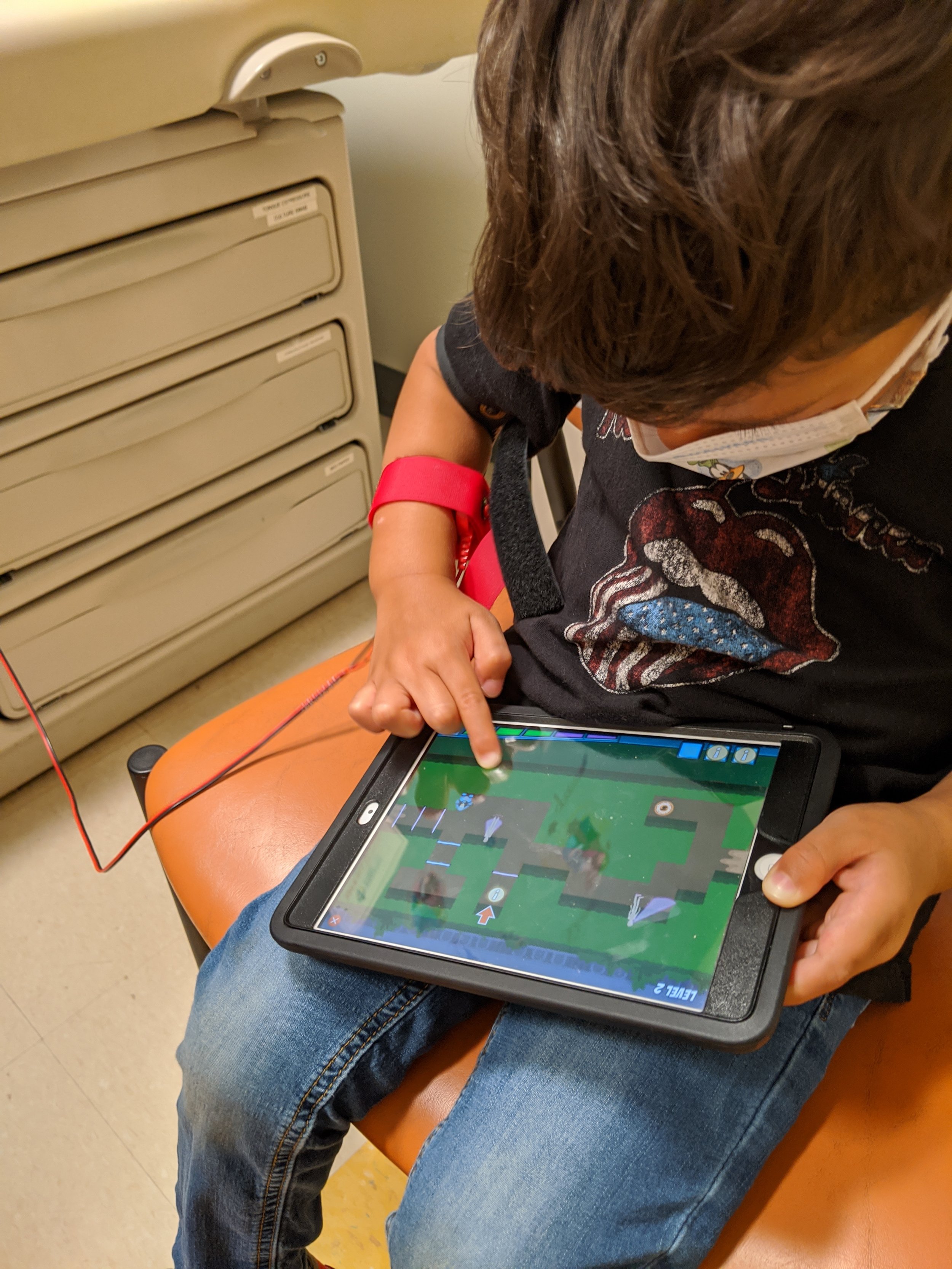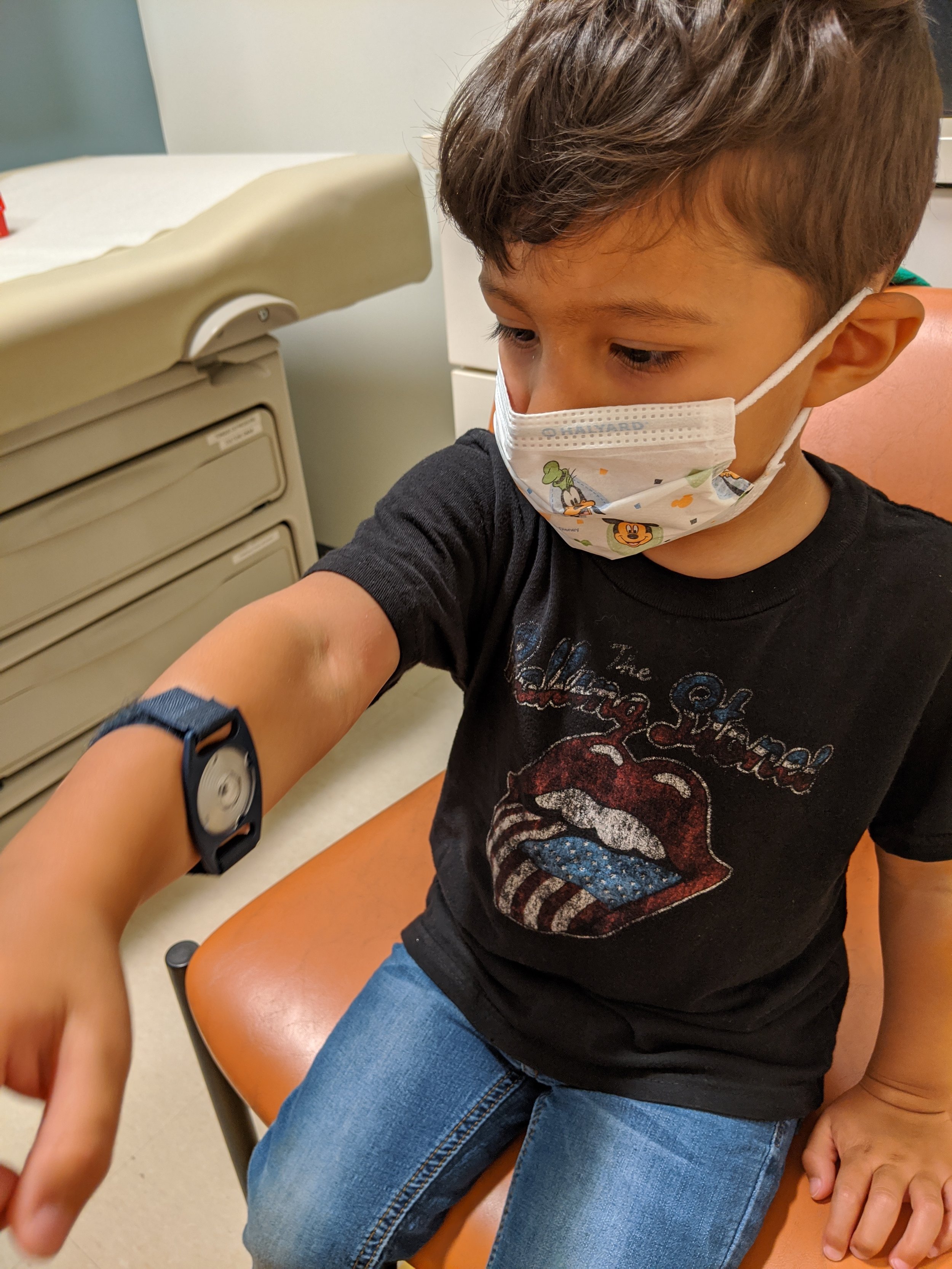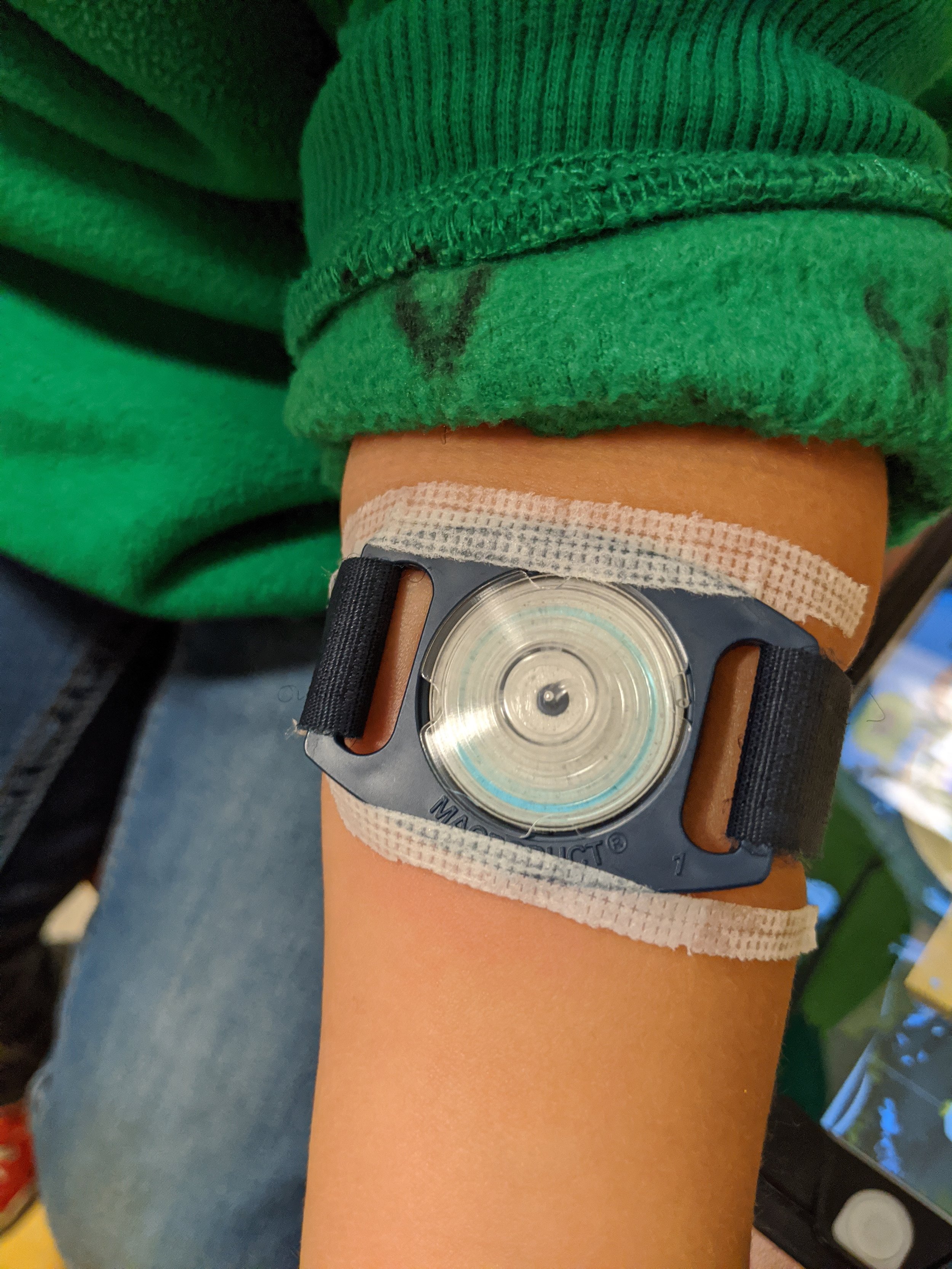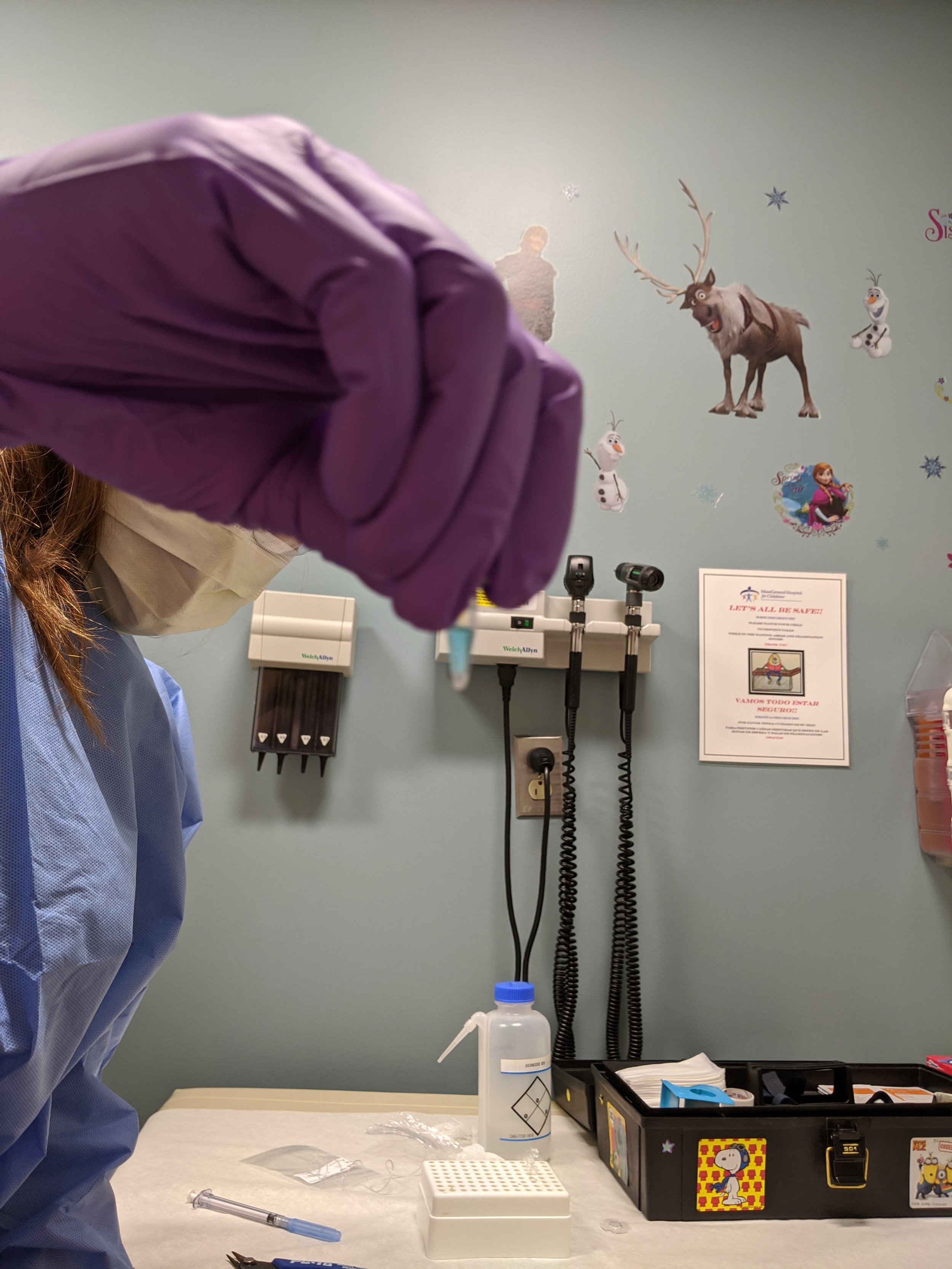Originally posted November 14, 2020
If you, your child, or any other person has a medical concern, you should consult with your health care provider or seek other professional medical treatment. Never disregard professional medical advice or delay in seeking it because of something that have read on this blog or in any linked materials.
One of the many learnings that came from my son’s Rectal Prolapse experience, was the Sweat Test. According to our Pediatric Gastroenterologist, rectal prolapse can sometimes be a sign of cystic fibrosis. While Phoenix didn’t have any other related symptoms, we went through with the Sweat Test to be sure.
A sweat test is a non-invasive test that measures the amount of chloride, a part of salt, in Sweat. It’s a diagnostic test for cystic fibrosis (CF), a disease that causes mucus build-up in the lungs and other organs.. People with CF have a high level of chloride in their sweat.
Going into the ‘test’, I only knew they were going to gather sweat to test it. The ‘how’ was the fascinating part!
We were advised to bring something for Phoenix to do and to bring a sweatshirt to help keep him warm. He is like me (fortunately or unfortunately) so he sweats pretty easily.
The technician started with some electrical stimulation on both of Phoenix’s forearms. This first part helps to encourage the sweat glands to produce sweat. They say a person may feel tingling in the area, or a feeling of warmth, though Phoenix was too pre-occupied to notice. This part of the test lasted about five minutes.
Then the technician strapped on a watch-looking device. Where the face of the watch would be was a plastic coil. Underneath the coil, touching Phoenix’s arm, was a small hole connected to the opening of the coil. The device was wrapped in saran wrap, gauze, and tape while Phoenix watched curiously. The technician put his prepped right arm inside of his fleece sweatshirt and then repeated the process on his left arm. Once he was set up with his iPad, sweat began to gather through the holes and into the coils.
About 25-30 minutes later, the fun began. The technician removed one arm at a time, unwrapped the device, and showed us the sweat that had gathered. You can see that in blue in the photo below. She used a particular tool to lift up the coil, cut it off, and carefully poured into the tiniest little vial.
In this video the technician removes the coil from the collection band and then she pours the gathered sweat into a very small vial.
And that was it. Pretty easy. Totally painless. Fascinating.
